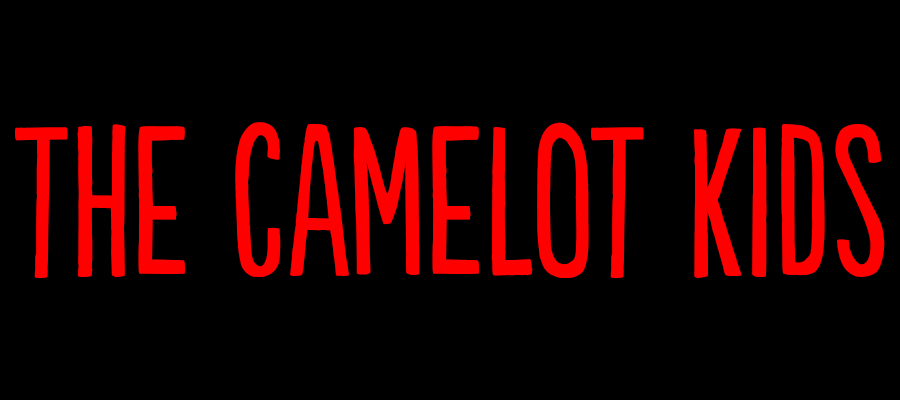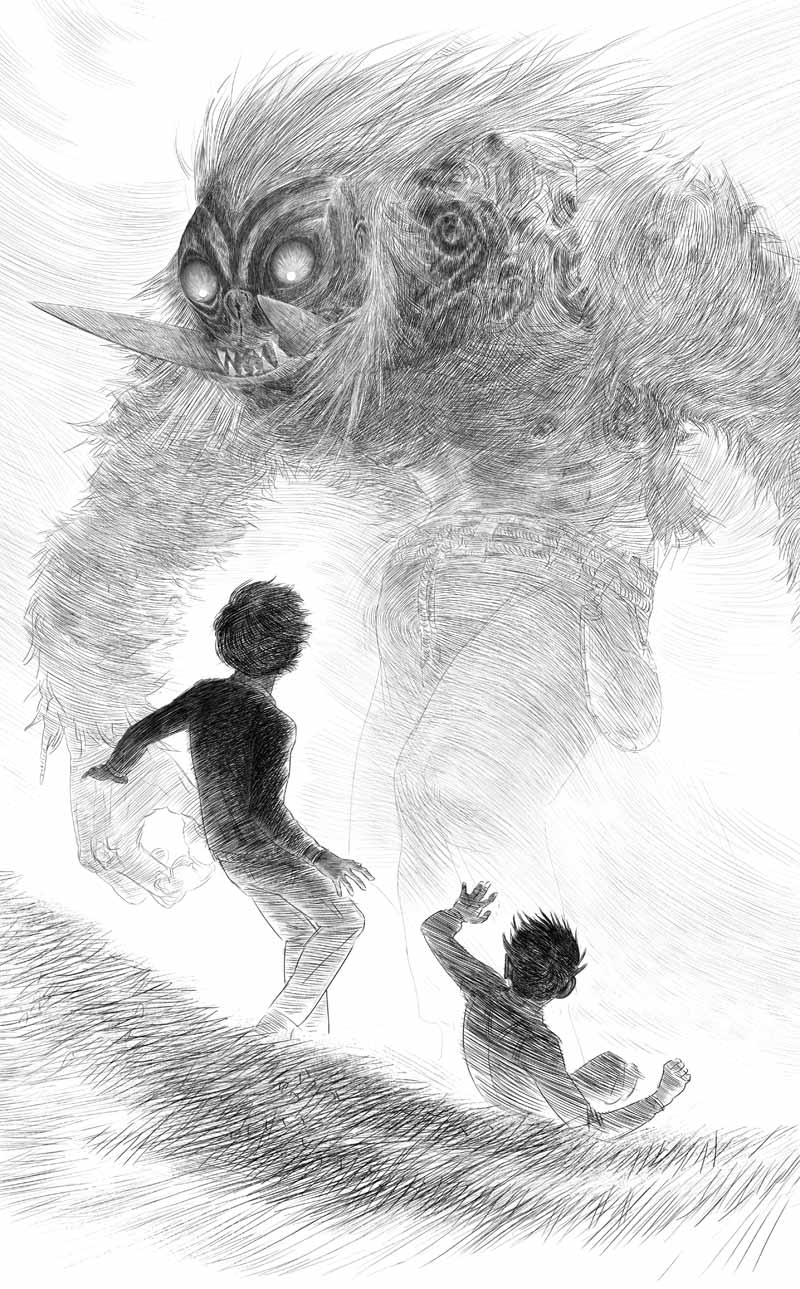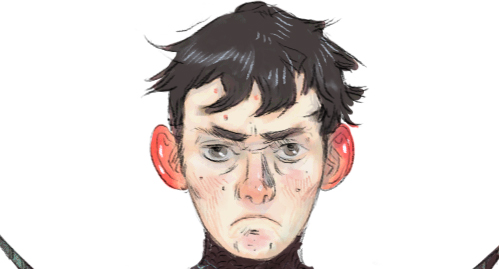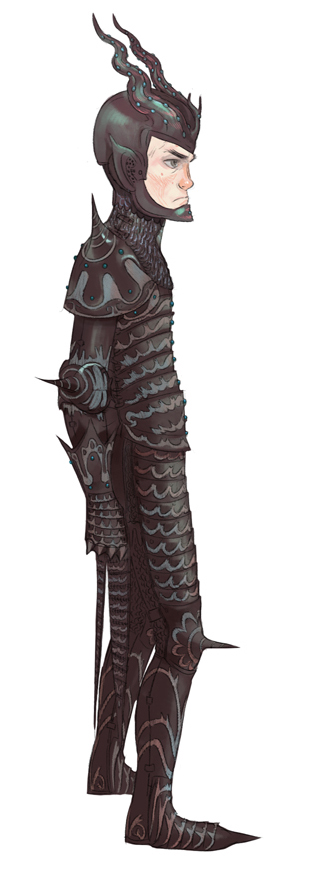
by Ben Zackheim | Sep 12, 2014 | The Camelot Kids, Writing |
Chivalry is the act of defending those who cannot defend themselves.
That’s a simplification, but I’m going with it (for now), and you can’t stop me.
The same way magic is the code that holds Harry Potter’s world together, chivalry is the code, the foundation and the social dynamic of Camelot.
Now that I’ve completed Book One, I understand that something in the core of the mythology was drawing my own sense of chivalry out of me. It was injecting these complex, flawed characters with a sense of doing the right thing, no matter the cost. Sure, the complex moments of bravery, stubbornness and kindness were emerging in a mystery/action/adventure yarn. But within the mask of story was a seed of humanity that I’d never considered deeply for my protagonists before.
An orphan helps an orphan.
A bullied student helps the new kid escape a gang.
Even those who live a life rife with heartache and hard knocks emerge chivalrous. No, especially those who live a life rife with heartache and hard knocks emerge chivalrous.
But why? How? Where does this instinct to protect those around us come from? What happens inside us when we drop our own interests and risk everything for other people?
The answer became clear as I wrote the book.
The dynamic of wanting to connect with people is the same dynamic that makes us risk everything to help them. In other words, our connection to each other, simply because we’re human, has costs as well as payoffs. For our humanity, we get friendship, love and support as a “payoff”. But does that mean that heartbreak, pain and rejection are the “cost”?
No. That was my revelation as I wrote The Camelot Kids.

The cost of this human experience isn’t heartache, pain and rejection. It’s chivalry.
Being loved, supported, hated, ignored creates an astonishing power to do the right thing for anyone — friend, foe, or stranger. That human connection is so complex that something in us is willing to give our lives for it in a split second.
For me, this revelation does something profound to my sense of modern life. Don’t we live in an insulated bubble? I’ve assumed that most of us reach a certain age of reason where we construct a world with as much love as possible, and avoid the most pain. It takes a while, but it seems to me to be a standard human thing to do. To the degree that we have control over our surroundings, don’t the vast majority of us expend a tremendous amount of energy on building comfort and avoiding discomfort?
While I still think the answer to these questions is yes, it’s clear that we have a Trojan horse of bravery, duty, kindness and chivalry in us. It’s rolled into our gut at around the same time we look at another human and realize we want to keep them close forever. And it’s solidified when we meet our first enemy.
I think it’s the most exquisite insight we could have today. I think mythology that reinforces this inherent power in each of us is what we all need right now.
Taking this idea further; our disillusionment with Arthurian lore is indicative of our disconnect with our own chivalry.
Prove it!
Okay. When was the last time we felt connected to the second most famous myth of our time? We get chance after chance in the Merlin or Camelot TV shows, the recent King Arthur movie — but they don’t resonate outside a small group of fans. It’s not because the efforts suck, necessarily (though some do). It’s that they’re stale. They treat chivalry like it’s a noble thing only, and not the complex force it is.
Chivalry is Gandhi.
Chivalry is Martin Luther King, Jr.
Chivalry is Malala Yousafzai.
The heroes of Camelot don’t need to tell the same thousand year story again.
The heroes need to be among us. More importantly, they need to be chivalrous among us.
So for all my humility and fear in tackling the lauded lore, my goal with my new book, The Camelot Kids, is to give the world a peek into Camelot in our time. I want to make Camelot fun again. And I want to do it in a way that’s respectful of the tales’ whimsy, boldness and deep conviction that to do right for others is to do right for everyone, including yourself.
After all, the more in touch we are with our inner Camelot, our sense of chivalry, the better off the world will be.

by Ben Zackheim | Aug 29, 2014 | Writing |

Thank you.
Thank you for your support. Your patience. Your kindness. Thank you for your Likes/Shares/Retweets ;-)
One of the hardest parts of launching a book is letting go. I’ve lived with these characters for nine years in one form or another.
Now The Camelot Kids belong to you.
I hope you love them and their story as much as I do. Forgive them their dense teen moments. Celebrate their complete inability to get along. And, uh, I guess you should just try to ignore the smell of the boys’ quarters.
Go pick ’em up! The ebook will be $1 for a week and then the price will go up (just in time for Part Two in September).

by Ben Zackheim | Aug 25, 2014 | Writing |
I tried so hard to hold back on sharing any of the final interior illustrations for The Camelot Kids: Part One.
I really did.
But I’ve failed.
I just had to share this illustration by Ian Greenlee.
The Camelot Kids: Part One includes several incredible pieces by the young talent.
Here’s the only one I’ll share.
SO SAY ME ALL!

Caradoc, the troll, strolls into Simon’s life.
What do you think?

by Ben Zackheim | Aug 6, 2014 | Writing |

(You can now buy Part One of The Camelot Kids on Amazon.)
When I first had the idea for The Camelot Kids, my upcoming book, it was about a summer camp run by Merlin.
Cool idea, maybe, but too similar to some stories I was reading at the time. I abandoned the project before it got started.
But my brain snagged on the Camelot myth. Knights, dragons, wizards, adventure, love, betrayal; this is the stuff we scarf up like Reese’s Peanut Butter Cups these days. And it’s attributable, or at least natural, to King Arthur in one way or another. Camelot and King Arthur are the vehicle in which Fantasy (with a capital ‘F’) has been carried through time, to our time.
If you ask people to tell the story of Camelot, well, that could mean a bunch of things.
The quest for the Holy Grail!
The forbidden, dangerous love affair between Queen Guinivere and the knight Lancelot!
Arthur pulling the sword from the stone!
Whichever tale you associate with the Camelot myth, it’s in your noggin somewhere, and it’s a good bet that your impression is somewhere between “blech” and “meh.”
Isn’t that odd? One of the heartiest yarns to survive the ages actually leaves many Fantasy fans cold!
As I dug into the story I found something even odder. Camelot felt like a cardboard cutout of fantasy. It felt like a 50s Disney film with pointy towers and pointy flags and fair ladies with pointy hats. Everyone wore white or gleaming armor in my mind’s eye. Fair maidens batted their eyelashes. And knights? They jousted, or something. Blech, indeed. Maybe Camelot wasn’t for me after all.
But there’s a big but.
I figured out how Camelot would be relevant to me again. It wasn’t easy. In fact, it took Alice in Wonderland, Narnia, Harry Potter and, most importantly, the horrible 80s film, He-Man and the Masters of the Universe to give me my eureka moment.

The world sucked for a kid growing up in 70s and 80s America.
And it was hard to ignore the suckage, which ranged from the Iran Hostage Crisis to Max Headroom to everything else.
Luckily, Fantasy was thriving ! Star Wars, comics, and any Atari game or Tor book were crucial to my sanity. Taking a look around at what popular culture has become today, it’s clear that several billion others felt the same way.
Back then, I read comics and books that swept me away from wherever I was because wherever I was just plain bit. With Star Wars or Superman I could escape into a place that had nothing in common with my farty classroom, or the stale mall, or my quiet bedroom. To me, there was no magic here. There was only magic there.
This is one of the reasons why I hated stories where kids from our world stepped into another one. To me, even one child from our reality stepping into a fantastic world would be like a cancer on the story, sucking our insecurities about “otherness” out of us like pus from a wound. Narnia, Wizard of Oz, Alice in Wonderland…they were so quaint with their talking animals and spritzy, cute sheen. (note: I love them now, but I was an angry teen!)
Worst of all? The kids always wanted to go home! Losers.
The people in these stories were shallow to me. Their bonds to other characters were like a person to a pet — strong but inhuman. All the “heroes” had one foot out the door, willing to risk everything to see mommy again.
My hatred of the “Looking Glass” type of story was vindicated (in my petty mind) when the He-Man and the Masters of the Universe movie came out in 1987. Starring Dolph Lundgren and Courtney Cox — need I say more? In the movie, He-Man is trapped in our universe in a far-from-epic adventure designed to sap the magic out of our world for decades. No, that wasn’t the plot. That’s what the movie actually did. It made your standard TV movie of the week look like The Godfather. To me, this movie was proof that no one knew how to take a normal kid, place him in another world and tell a good story.
I balanced myself on that told-you-so soapbox for years. It was an argument I had with my film geek college friends in NYU Tisch School. I watched as Hollywood botched fantasy film after fantasy film with nary a lesson learned.

Then Harry Potter came along.
It took Harry Potter to show me that our world and a fantasy world could mix, and be fantastic. The thing about Harry Potter that changed the dynamic for me was emotion. The best Fantasy starts with our sense of love, jealousy, revenge, ambition and then places it in a fairy tale. What had been missing for years (for me) was a story that took place in our world but treated us as magic. What author would be daring enough to shed the sarcasm, the cynicism of our times and insist that adventure is right under our noses? Who would find a fantastic way to tell a human story where a school, not a parent, is the ultimate shield from harm? Who would acknowledge our deep desire to be swept into another world and never see this one again? It turned out to be JK Rowling.
The lore of King Arthur is stale because the humanity has been leeched out by centuries of interpretation. Characters have become cardboard caricatures. Camelot has become Disneyland. Chivalry has become trite. In many ways the second most recognizable fairy tale in the western world suffers a lack of depth.
This is what I thought. Past tense. Until…
(and this is where my desire to write about Merlin and his pawns sat up from its death bed like the Frankenstein monster)
…until you ponder the famous Arthurian characters as normal people trying to make the world a better place, but stumbling on their weaknesses.
That would be cool.
And make them modern people, who we can identify with.
But don’t lose the history. Never lose the history. Make a sequel, not an adaptation.
Writing is hard.
Writing about famous figures is harder.
Writing about Camelot is downright dangerous. The consequences of taking creative license with something that has Ivy League programs dedicated to it invites wrath that’s usually reserved for atheists writing about God. But, really, can you think of a more exciting hill to climb?
When I started researching The Camelot Kids, I’d never read any of the classic Arthurian tomes. I’d never seen the racy Excalibur flick or Disney’s Sword in the Stone. But somewhere along the line I’d become so familiar with the gist of the key characters that I spontaneously grew an appetite to consume their stories, old and new.
As I immersed myself in the myth of Arthur and his Knights of the Round Table I was struck by how familiar it was. When I read A Connecticut Yankee in King Arthur’s Court, I was surprised to find that it was good to see these old stalwarts, these staples of Fantasy. It wasn’t quite the same as seeing a new Indiana Jones movie, or picking up a new Harry Potter, but it was still a tug at the heart which is the sole domain for old favorites. Where did I ingest the story so deeply that I could tell you about Mordred or Morgan Le Fay? How could I recall the young Arthur pulling the sword from the stone? Why was Lancelot so burned into my mind’s eye?
My best answer is that all archetypes seep in. They’re in images we see every day. Their morals come up for air in the small deeds we do for and against others. They are us. And we are them.
So, upon realizing my love of characters whom I sensed, but did not know very well, I began work on The Camelot Kids.
From the blank page I noticed something odd.
It usually takes a while for me to flesh out my plot and characters. Weeks, months. But within days, I’d settled on writing a modern tale where a number of young teens are told that they’re descendants of Arthur and the Knights of the Round Table. Merlin needs their help to save New Camelot from destruction.
From the first tap of a keyboard key, the boys and girls in my new story came alive. They were sweet, petty, funny, confused, and searching for chances to connect with each other in meaningful ways.
And they were chivalrous. Naturally so. Humanly so. In other words, they were chivalrous at times, vindictive in others.
There’s that word again. Chivalrous. What is it? And why is it so important in King Arthur’s world? Here’s why!

[divider divider_type=”gradient”][/divider]

by Ben Zackheim | Jul 21, 2014 | The Camelot Kids |
 Red is… complex.
Red is… complex.
From the moment he and Simon meet in The Camelot Kids, they hit it off, notwithstanding some awkward moments.
Indeed, Red is the only person who even tries to get to know Simon when he first arrives in Graham Academy, a private school near his Uncle Victor’s home.
But Red also appears to be a fearful kid.
He scampers away at odd times. He talks to himself a lot. Simon, always one to stick with a friend, doesn’t think much of it.
But he should trust his gut more…
Here’s the set up for the following scene from The Camelot Kids: Simon’s first day in his new school, Graham Academy, is not going well. He’s late for everything. He’s already a gossip magnet, and no one will look at him much less talk to him. Except for one girl, Gwen. She helps him find his next class just in time.
Simon does his best to get her attention throughout the class, but she just joins the rest of her classmates in ignoring him. Little does he know, Simon is on the verge of a friendship that will change his life forever…
Excerpt from The Camelot Kids
As he gathered his books, he noticed a small boy with pitch-black hair, and the reddest ears he’d ever seen, sitting at a desk near the back of the class room. It was the kind of red you see in candy stores and comic books. The boy gave him a look as if he were sizing him up for a fight. But that was ridiculous. The kid was so small that a fight with a kitten could go either way.
“Hi,” Simon said.
“Her name is Gwen and you might as well give up now.” The kid spoke in a high, squeaky voice with a heavy Scottish accent.
“Who’s Gwen?”
“The girl you were dancing in yer chair to see all class long. You should be careful. That’s the kind of thing kids look for in this class so’s they can use it against you later.”
“Kind of like you’re doing now.
“Kinda, yeah. I’m James. But people call me Red.”
“Do you like being called Red?”
Red squinted. Simon worried that he’d gone too far, too fast. He tended to do that with people sometimes. What business was it of his what this guy called himself?
“Never really thought about it,” Red finally said. “I guess not. But I’m used to it, so call me Red.” Simon didn’t have much left, but he gave his best smile.
“Good to meet you. I’m…”
“Simon, yeah. The guy who took the heat off me. Now that yer here they can start dumping you head-down in the garbage pails and leave me alone.”
“Sounds like a plan.” Simon wondered how much a ticket back to New York would cost.
“If you want to get out of here with some sense of dignity you better not go through the front door of the school.”
“But that’s where my ride home is.”
“I’m just sayin’. Do what you wanna. It’s not like I’d know anything about it, being that I’ve found a way to survive here for two years.”
“Sorry. It’s a long walk home, though.”
“Where you live?”
“Falcon Castle.” Red’s ears glowed purple. His eyes got wide and even teared up a little. “What’s wrong?”
“I didn’t realize you were that Sharp family. His castle is bad news, friend. Everything I heard is that it’s haunted at best and filled with maniacs and monsters at worst. I’d rather sleep in the forest, if you ask me.”
“Nah, it’s just my uncle’s place. He has a bunch of dogs, is all.”
“That’s what you think they are? You ever seen one of these supposed dogs?” Now that Simon thought about it, he hadn’t. He’d thought he’d seen a dog in the room with the weapons, but it was too dark to see. It had sure sounded like a dog. What else could it be? “My allowance is on them being not-dogs.”
“Then what are they?”
“You tell me,” Red shrugged. “Yer the one living there.” He started to unwrap a candy bar and munch on it as he passed by Simon. “I’ll show you the safe way out of here if you wanna know.”
Simon sighed and followed. Red walked close to the wall as they wove through the halls. He peered around corners before he turned them. Finally, after a lot of sideways glances from other students, they passed through a small door to the outside. Simon stuck close as Red worked his way down a steep hill. They didn’t stop until they’d entered a thick forest behind the academy. The sun made barely a dent here, with large dark shadows giving way to weak rays of white light. Simon had the sense the ground beneath their feet wasn’t all that solid, as if jumping up and down would send them falling into an abyss.
Red started to work his way through the trees. “No one comes back here except people who are running from something.”
“Yeah, I can see why. How can you even tell where you’re going?”
“I can’t.”
“Oh. Great,” Simon said.
“Relax, Wendy Worrywart! We’ll use the trees when we need ’em. I climb like a spider!” Red struck a pose like a tiny, dippy Spider-Man.
Wendy Worrywart?
They worked their way through the shin-grabbing brambles and found a trail. In the distance, Simon could make out the school’s front entrance where Hector’s car was parked, waiting for him. The red-haired jerk was hiding behind a shed, probably waiting for Simon to emerge from the school.
“His name’s Chester,” Red muttered. “Second meanest person in town behind his mother. His goons are the dumbest ones in class, which also means they’re the strongest around here.”
“Best of the worst.”
“Exactly. You know the type, I guess.”
Simon thought of Billy, back in New York. He wondered how he was holding up. Hopefully he wasn’t on Brad’s radar. “Yeah. We have them in New York too. But I mostly found ways to avoid them.”
“Now you have to start all over again, huh?”
Red sure was a bundle of fun.
Simon’s new friend climbed tree after tree to keep an eye on the overgrown path. They barely spoke for the entire trek, which left Simon some time to think about how ridiculous it was that he’d somehow escaped St. Mary’s for good, and yet there he was, tearing up his knees on Scottish thorns just to avoid another bully. Was he any better off here? The fact that he didn’t know the answer worried him. Should he start thinking about how to break out on his own?
After an hour, they started a descent into a small valley. Simon spotted Falcon Castle peeking over a nearby hill.
That’s when he got that feeling again. The one he’d had in New York so many times before.
Like the Gates of Weird had been thrown open.
Red seemed jumpy all of a sudden. He licked his lips like a lizard and didn’t blink. They pushed their way out of the trees, and stopped at the edge of a road.
Abruptly, Red backed up.
He tripped on a rock and fell on his butt. “I’m not getting any closer!” He shook his head, frantically.
Simon wasn’t sure what the outburst was all about. It wasn’t as if he were going to force Red to come along.
“Okay, sure, no problem. You okay?”
But Red just stared at him.
“Uh, so see you tomorrow…”
Red watched from the ground as Simon walked off. When Simon looked back he was gone.
So there he was, alone on the road, with the light fading. It was too quiet for his comfort. A bird sang on occasion, but that was it. As he got closer to the castle he realized that he might have a hard time getting past the estate gate since he wasn’t with Hector. But he’d figure something out. He always did.
Simon took a moment to admire the nearby grounds. The area was beautiful, but still. Nothing moved in the green of the ground or the vast gray sky. It was as if the entire world was doing its best to not disturb his uncle.
As he climbed the steep road to the gated entrance, he could feel eyes on him. He had company. He was sure of it. He took a deep, fortifying breath and turned fast. A dark figure stood on the road, around twenty yards away.
Simon backed up a couple of steps.
The person ran toward him.
It was Maille, the girl from the airport. She held a baseball bat in one hand. It glowed bright orange as she raised it over her head.
Simon ran.
~~~












 Red is… complex.
Red is… complex.
